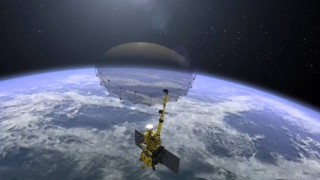
NASA has been forced to postpone the launch of its Vandenberg satellite, after an inspection showed issues with the United Launch Alliance Delta II rocket’s booster insulation. Originally set to blast off on Thursday morning, the space agency has decided to push back the launch to Saturday.
The Vandenberg satellite’s launch was originally slated for Thursday at the Vandenberg Air Force Base in California, before being moved to Friday at 6:20 a.m. because of wind shear. However, Friday’s launch was also postponed after inspectors identified a problem with the rocket’s booster insulation.
The new launch is scheduled to take place at 6:20 a.m. on Saturday.
The Vandenberg satellite is part of NASA’s Soil Moisture Active Passive satellite (SMAP) mission, which is aimed at investigating the moisture content within the Earth’s soil.
The satellite’s overseers say it will generate maps that could provide researchers with detailed data on areas of flood and drought. It’s also hoped the new information will allow scientists to make better weather predictions and improve their climate models, while helping water management services to make more informed decisions on irrigation practices.
According to Dara Entekhabi, the SMAP science team leader, the mission will center upon “two distinct domains.” Speaking during a Jan. 27 news conference, Entekhabi offered the following insight into these domains:
“One, of course, as a science mission it impacts how we fundamentally understand how the environment works and peer into the metabolism of the environment. And second, it impacts some of the applications that touch our everyday lives.”
Costing around $916 million, the three-year mission will see the Vandenberg satellite put into polar orbit, some 426 miles above the planet’s surface. Weighing around 2,000 pounds, the satellite will use two instruments to beam microwaves down to Earth, thereby allowing scientists to take planet-wide moisture content readings within the very top two-inches of the soil. The instruments will also allow scientists to take water measurements to depths of approximately three feet.
The satellite’s performance will not be adversely affected by cloud, and will cover the Earth’s surface within just two to three days. It will also offer a resolution of around six miles.
